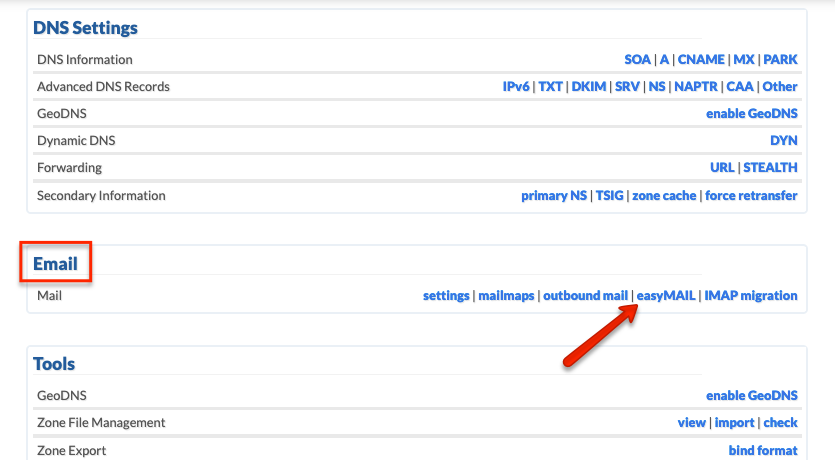easyMail now allows users to automatically set up both an SPF and DKIM records with only a few clicks directly from the control panel. Please note this tutorial assumes your easyMail service has already been enabled.
SPF (Sender Policy Framework)
SPF allows email systems to check on the sender of a message to be sure it comes from a legitimate source, and refuse email that does not. SPF is not directly about stopping spam/junk emails. It is about giving domain owners a way to say which mail sources are legitimate for their domain and which ones aren’t. While not all spam is forged, virtually all forgeries are spam. SPF is not anti-spam in the same way that flour is not food: it is part of the solution.
One of the most common tricks used by spammers to send unwanted emails is to disguise where the email is coming from. Often people receive bounce messages for an email, which appeared to come from their address, when in fact they did not send it. This is an effect of spammers trying to get around blocking by faking what address sent the email (called spoofing or forging the headers). With SPF preventing this, spammers cannot fake from where they are sending and they become that much easier to block. However, users should note that in order for SPF to work, both the sending and receiving mail server must have this feature enabled.
SPF records are of interest to people who are concerned with cutting down the amount of spam circulating on the Internet. The more people who make use of SPF records to allow emails from their domain to be verified, the more reliably email systems can recognize whether an email is legitimate or not. While creating SPF records will not immediately affect the amount of spam you receive, over time this protocol can make bulk emailing more difficult for spammers.
SPF is also of interest to domain holders who are concerned that forged headers are making it look like they are spamming, as a way to demonstrate that the email did not actually originate from their domain.
DKIM (Domain Keys Identified Mail)
DKIM is a protocol for signing and verifying the authenticity of an email’s sender. It does not provide any encryption for e-mails themselves, nor does it provide any actual control over whether mail is received or not, unlike SPF. Mail is always received and accepted, regardless of whether it is correctly signed. The main value of it is for senders with large mailing lists who wish to avoid being throttled by large systems such as Yahoo, Hotmail, or Google, all of whom support DKIM.
DKIM requires that sending mail servers to be set up with a public/private key pair for signing outgoing messages, and a TXT record in the DNS zone file that displays the public key for authenticating signed messages.
To enable either SPF or DKIM for your easyMail service, please do the following:
1.Log into your easyDNS account.
2. Click on the EMAIL.

3. Click on EASYMAIL.


4. Click on the HOSTS tab and then click on ADVANCED SETTINGS.

5. Select if you’d like to create an SPF or DKIM record and then click on NEXT.

6. Confirm your changes.
You should now be able to see either the SPF or DKIM within your TXT Records under your DNS Settings page:

